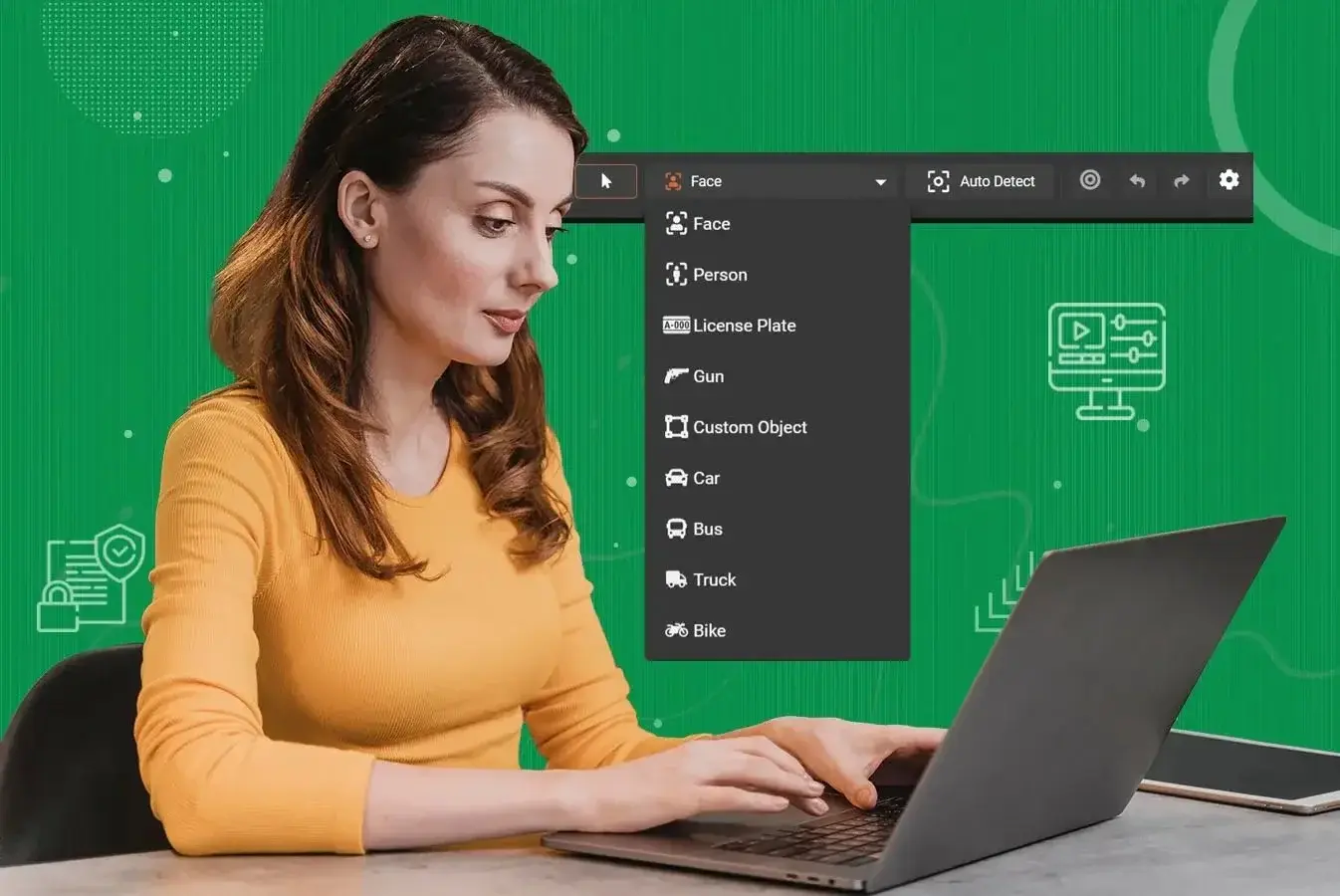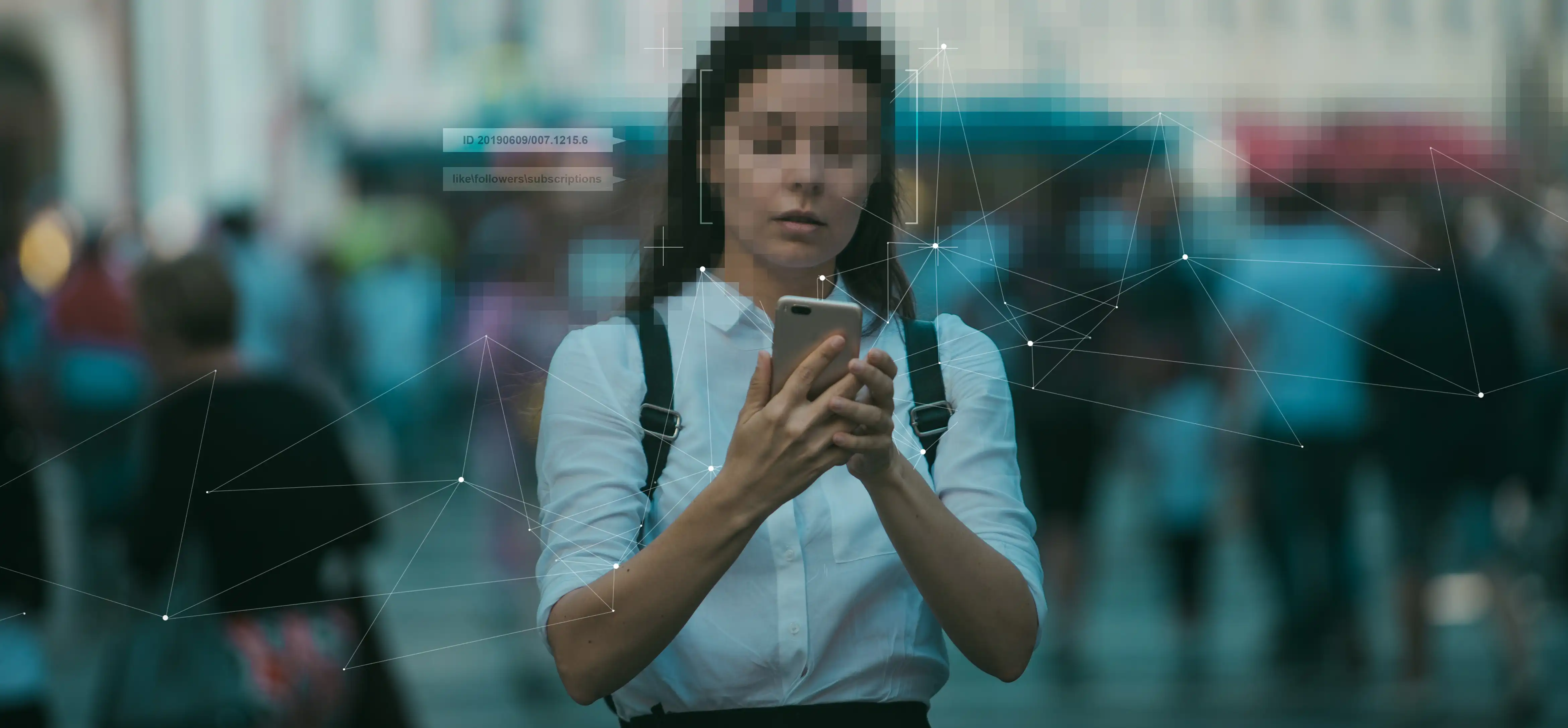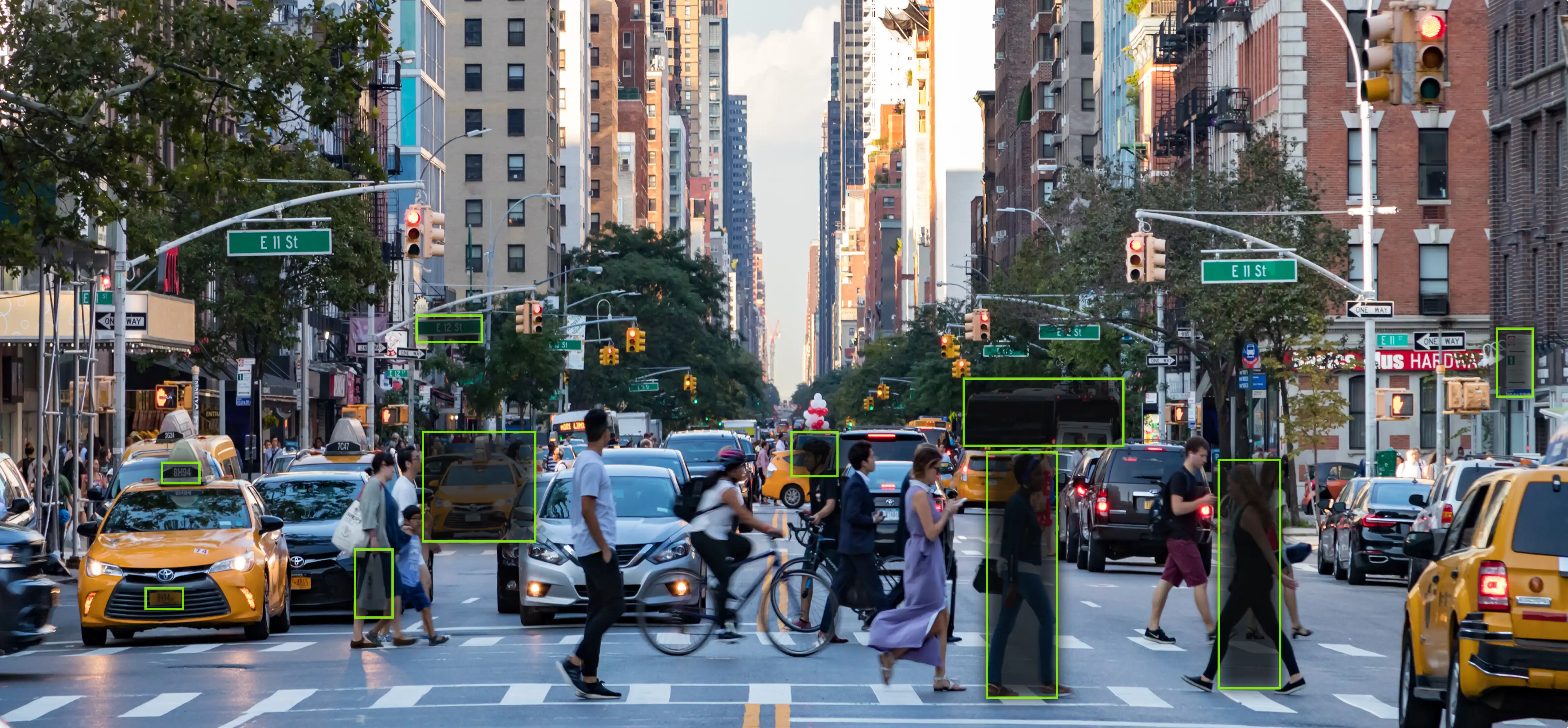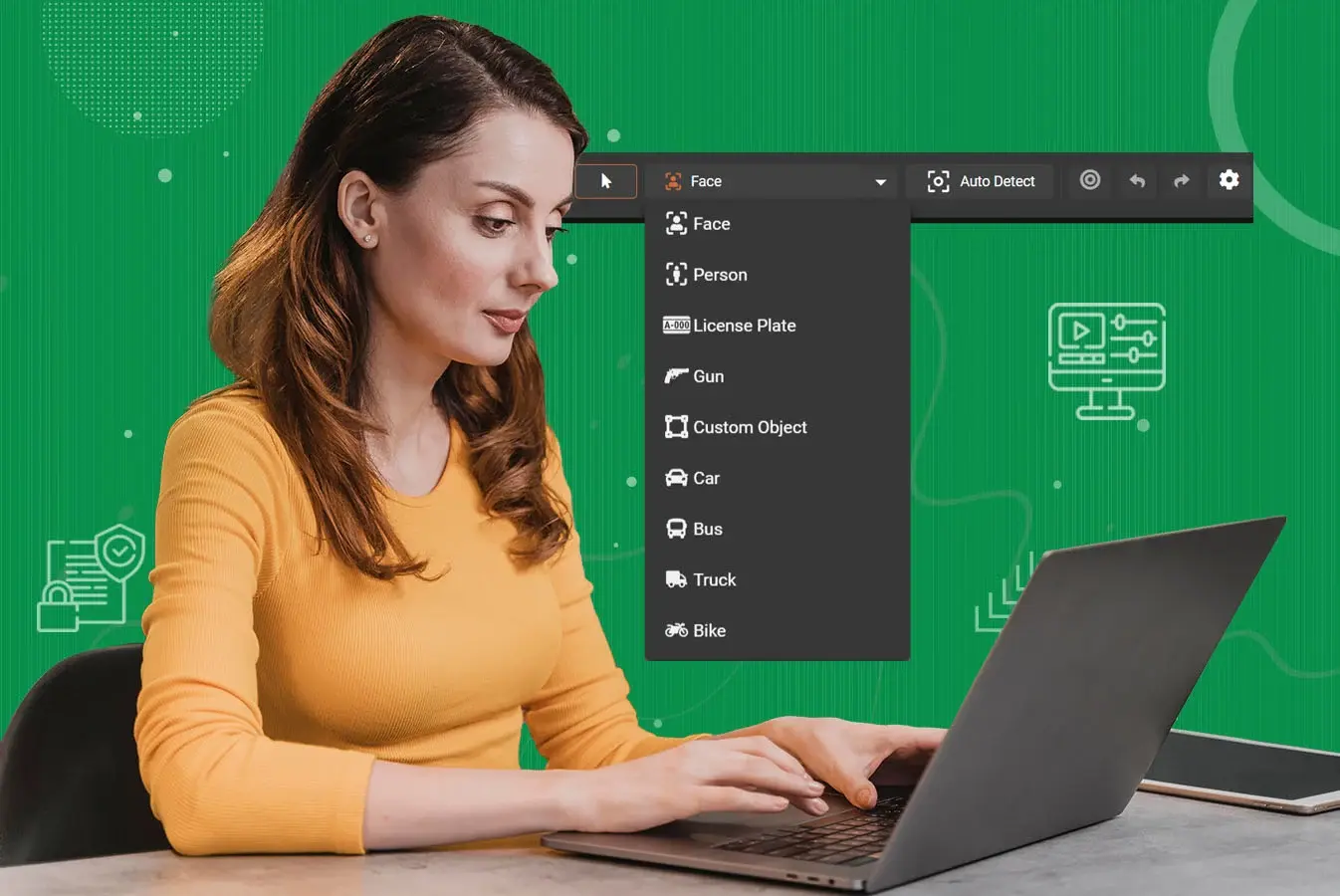How to Redact a Video Efficiently with Video Redaction Software
by Bassam Mazhar, Last updated: April 9, 2025, Code:

In today’s data-driven world, ensuring the privacy and security of sensitive video data has become more critical than ever. Learn how to redact a video with ease using video redaction software.
Whether you're a healthcare organization, legal firm, financial institution, government agency, educational institution, or any commercial/non-profit organization, video data plays a crucial role in daily operations.
However, the widespread use of video has also raised privacy protection and secure data sharing concerns, as videos often contain sensitive information such as Personally Identifiable Information (PII), Protected Health Information (PHI), and Confidential Commercial Information (CCI).
Organizations must adequately secure or blur sensitive information from video content to prevent data exposure and ensure compliance with key data privacy regulations—including HIPAA, CCPA, and GDPR, as well as information access rights such as FOIA and DSAR.
To address these concerns, video redaction offers a viable solution to blur sensitive information, including details of individuals in various settings—such as healthcare professionals, patients, witnesses, law enforcement officers, and students—as well as confidential business information like financial data, trade secrets, and other sensitive content.
Let’s explore how to redact a video efficiently to blur sensitive information. But first, let's look at the importance of effective video redaction. (If you'd like to learn more about video redaction, explore our article on video redaction software.).
The Pressing Need to Redact a Video
In the third quarter of 2024, 422.61 million data records were compromised in data breaches, exposing sensitive information and impacting millions of individuals worldwide. This underscores the urgent need to efficiently redact sensitive information from data, including videos, to mitigate the risk of data exposure and ensure compliance.
Types of Information to Redact in Videos
For law enforcement, digital evidence captured from various devices such as Body-Worn Cameras (BWCs), Dashcams, and CCTVs has become crucial for modern investigations. However, this raises concerns about protecting the privacy of victims, innocent bystanders, undercover officers, and witnesses.
Similarly, in the legal sector, digital evidence like court recordings, depositions, surveillance footage, and crime scene videos must be carefully redacted to protect sensitive case details, witness identities, and confidential legal proceedings, ensuring full compliance with legal and privacy requirements.
In healthcare, surveillance videos, patient monitoring systems, and operational procedure recordings are widely used for security, training, and medical documentation. However, these videos often contain PPE (Personal Protective Equipment) and Protected Health Information (PHI), including patient faces, medical records, and sensitive procedures, requiring redaction to comply with HIPAA regulations and OSHA guidelines.
Similarly, in finance, banks and financial institutions use surveillance footage for fraud prevention, security monitoring, and transaction verification. These videos may capture customer information, account details, or confidential financial transactions, making redaction necessary to protect sensitive data and ensure compliance with GDPR, PCI DSS, and other financial privacy laws.
In education, institutions record classroom sessions, online lectures, campus security footage, and student disciplinary proceedings. These recordings may include student identities, academic records, and private discussions, which must be redacted to adhere to FERPA and protect student privacy.
Across all these sectors, AI-powered video redaction has become essential for efficiently protecting sensitive information, ensuring compliance with data privacy regulations, and preventing unauthorized data exposure.
Traditional Methods of Redaction
A few years back, redaction was simply obscuring a portion of printed text documents or hiding personal information manually from documents or images with a black box.
Unlike document or image redaction, concealing personally identifiable information within multiple video frames or hours of video footage is a challenging task.
The traditional approach involves the manual redaction of images and videos using simple editing tools to blur sensitive and confidential information that should not be revealed.
Let’s take an example of image redaction.
Manual Redaction of Images
The process of image redaction entails manually hiding sensitive personal data using a black redaction box. The procedure involves several steps: first, select the image that requires redaction, then identify the specific elements within the image that need to be hidden.
Next, adjust the redaction parameters, such as the size, shape, color, and transparency of the redaction box. Afterward, you draw the redaction box over the selected elements manually and finally apply the redaction to conceal the chosen content effectively.
Too much effort, honestly!
One of the benefits of manual redaction is that it is highly customizable, allowing users to redact information in a way that is most suitable for their specific needs. However, manual redaction is time-consuming and can be prone to errors, as it relies on the user's attention to detail.
Along with time consumption, manual redaction may not be completely secure for highly sensitive information, as certain techniques could potentially reveal the redacted content.
For more secure redaction, especially when dealing with sensitive documents, it's best to use specialized software or tools designed specifically for redacting digital content.
Manual Redaction of Videos
To redact a video manually with a traditional approach, you would need to:
-
Firstly, record a video.
-
Then, upload it to a database.
-
Identify objects to be redacted entirely or a portion of them.
-
Redact by blanking out, blurring options, or drawing boxes or shapes over people and objects by hand.
-
Scan the videos frame by frame and draw boxes over the targeted objects.
Manual redaction of videos in the above way is not efficient or accurate in certain circumstances as it has the following drawbacks:
-
Mainly, each copy of the video footage utilizes extra storage resources.
-
When u need to remove a major part of the video, like revealing only one person, you cannot do it manually on time.
-
Chances of human error and inaccuracy.
-
Time-consuming and expensive.
-
If a person is running, it is difficult to redact their different face angles within all video frames manually.
With the increasing digitization of data and the prevalence of videos, more sophisticated redaction techniques are required to protect privacy effectively in modern times.
So, what is the solution? Use the power of AI for redaction!
Use AI-powered Video Redaction
Automatic, AI-powered redaction uses AI to detect and redact—pixelate, blackout, or blur sensitive information in videos automatically. It is a convenient and time-efficient method that can save significant effort and resources. It uses advanced algorithms to automatically identify and redact critical information, such as faces, license plates, and other details.
Automatic video redaction has multiple paramount features.
- Object Detection: Detect elements like personal protective equipment, faces, people, license plates, guns, vehicles, and other custom objects with object detection.
- Object Tracking: Track objects throughout the length of the video and keep them redacted to ensure no sensitive details are exposed with the help of object tracking.
- Automated Translation and Transcription: Automatically translate or transcribe content within videos in over 40 languages to easily redact sensitive information.
- AI-enhanced search: Utilize AI for enhanced search within video files with tags, spoken words, metadata, and more.
These features have upgraded the entire process of manual redaction. The redaction system automatically follows objects frame by frame using artificial intelligence, reducing human effort and saving time and money.
To give an idea, we will take our tool as an example and explain how we do it.
How to Redact a Video With Video Redaction Software

Video redaction software like VIDIZMO Redactor allows you to redact videos efficiently with a few clicks. The process is as follows:
- Login to the VIDIZMO portal and select the desired video for redaction.
- In the studio space, choose the Redact option for the selected video.
- Click on the Auto Detect option within the portal to scan the specific segments of the video. You can select from a range of detection types, including faces, people, vehicles, weapons, and license plates.
- Once scanned, the system will automatically detect all the faces and other specified elements, displaying detection boxes over them.
- You can choose your preferred redaction style from various options like blur, pixelate, or add a black box.
- Once you have selected the appropriate redaction style, simply click the Publish option located at the top right corner of the studio space.
- Your video will undergo redaction, ensuring compliance with privacy regulations. It is now secure for sharing purposes.
Redact Videos with VIDIZMO Redactor in the Right Way
VIDIZMO's redaction capabilities are essential for businesses dealing with sensitive information. With VIDIZMO Redactor, businesses can protect sensitive information, comply with regulations, save time and resources, and enhance their security infrastructure. VIDIZMO's redaction capabilities are a valuable addition to any business that values privacy and security.
Some of the Key features are as follows:
- Strengthen video privacy by redacting spoken PII, ensuring sensitive audio is securely removed from your videos.
- Protect your video content at all times with VIDIZMO Redactor’s centralized and secure repository through encryption, SSO integration, granular access controls, and more.
-
Automatically detect and track objects, faces, persons, or any other personally identifiable information along with weapons, including pistols & rifles, and custom objects using AI.
-
Rapidly redact sensitive data and PII in videos, such as names, ID card numbers, vehicle license plates, spoken PII, etc.
-
Use AI-powered search to locate videos within the video library and search within content for sensitive information. Automatically identify and redact unique sensitive data as needed.
-
Automatic redaction with manual redaction capability for more accurate results.
-
Mute or bleep-specific audio segments containing information that identifies an individual.
-
Use the confidence score feature to ensure object detection accuracy and avoid missing details.
- Benefit from various flexible deployment options, including cloud, on-premises, and hybrid.
Are you interested in learning more about VIDIZMO Redactor? Explore our product or get hands-on experience with a free trial today (no credit card required).
Jump to
You May Also Like
These Related Stories

Key Factors to Consider When Choosing Video Redaction Software

Video Redaction: An Important Tool for Online Sellers



No Comments Yet
Let us know what you think